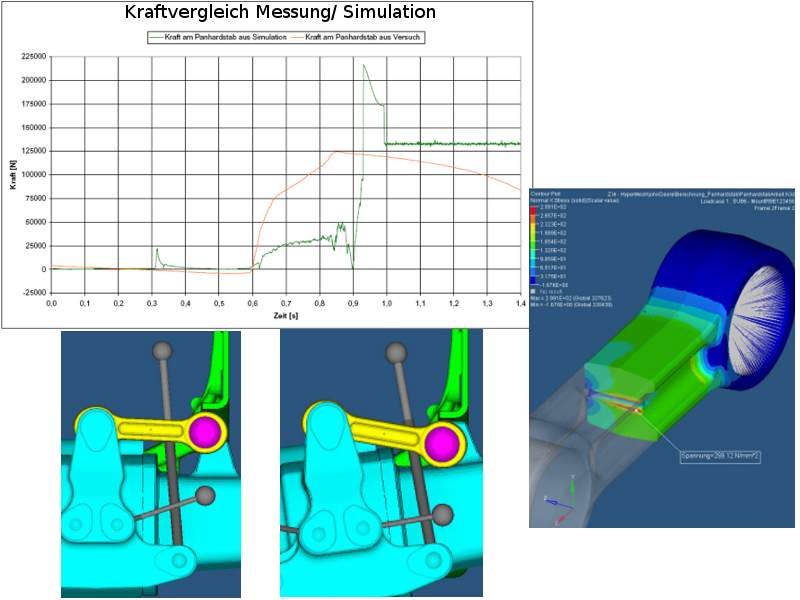For component design by the FEM method the loads on the assemblies and individual parts to be designed must be determined. Measurements are often carried out for existing constructions. One method for determining the acting forces is rigid body simulation. For this purpose, the CAD bodies of an assembly, for which component masses, inertias, functional principles and directions of movement are generally known, are linked together in a multi-body simulation to determine the load data acting on individual components.

Force determination for FEM calculation from multi-body simulation
Determination of the force effect by means of multi-body simulation (MKS)
In the multiple or rigid body simulation, the masses, moments of inertia and the main axes are first calculated with respect to the zero point. Then the individual components are simplified by removing grooves, undercuts and other details. This also serves to simplify and reduce the number of elements during the later creation of the FEM model for the subsequent analysis of the component stress within the FEM calculation. Finally, the bodies are connected and displacements and force effects are defined as boundary conditions. A common practice is to simplify connecting elements as spring/damper units or beams.
Use of results of the rigid body simulation for the FEM calculation of components
The rigid body or multi-body simulation outputs the force and deformation at individual components as well as the reaction forces at the contact points and is thus the basis for the subsequent FE analysis. If necessary, the simulation results can be validated by comparative measurements. Based on expert assessment, the calculation engineer can thus estimate which are the most stressed individual components or subassemblies and thus determine the system limits for the strength calculation.
From multi-body model to FEM calculation
By meshing and transferring the individual parts into a corresponding FEM model, the respective component load is determined. Subsequently, the contact forces, deformations and material models for the FE analysis are applied to the model. Finally, the calculation and evaluation takes place.
Advantages of coupling rigid body simulation with FE analysis
- Illustration of rigid body movements.
- Comparison with measuring forces.
- Use as a boundary condition for the FEM calculation.
Further example projects for FEM calculations of component strength:
- FEM calculation of a stool with plastic parts from the 3D printer
- FSI simulation of a cylinder head
- FE analysis of rubber and plastic components
- Practical FE- analysis example: Calculation of a pedestrian bridge
Are you curious ? Inform yourself about our range of services !